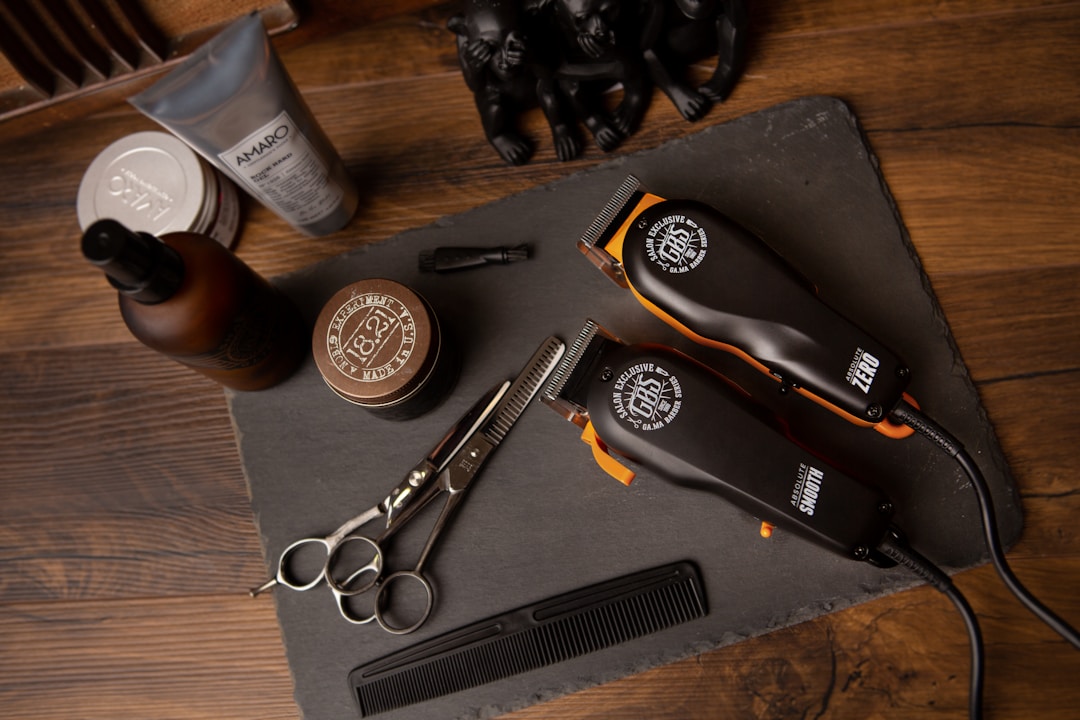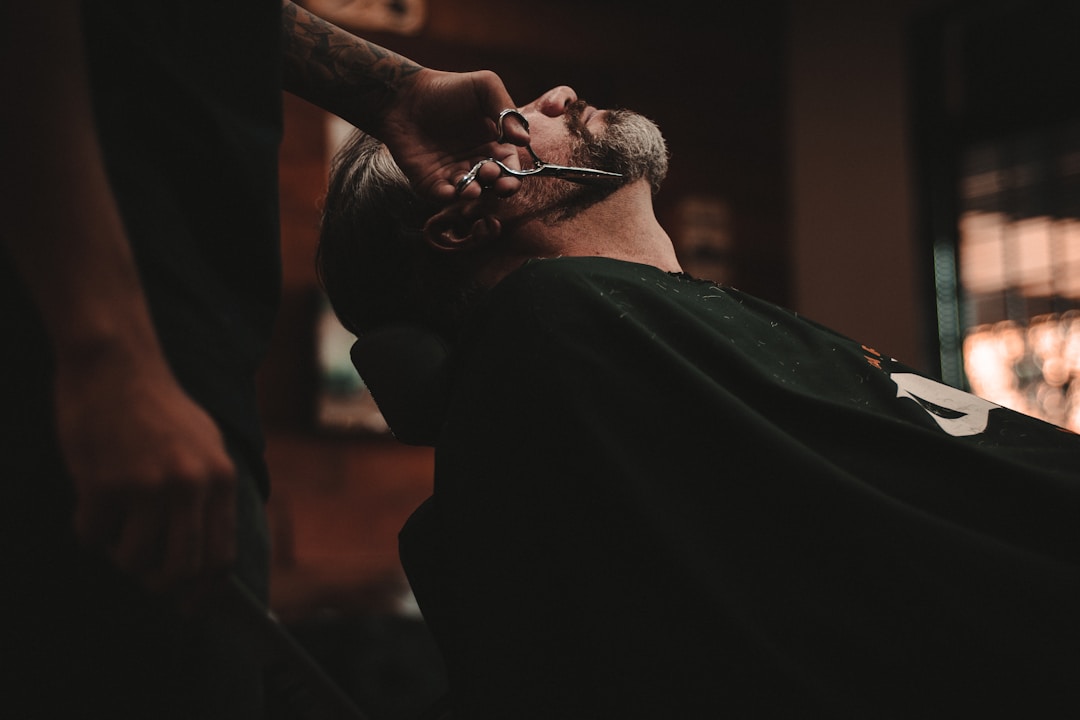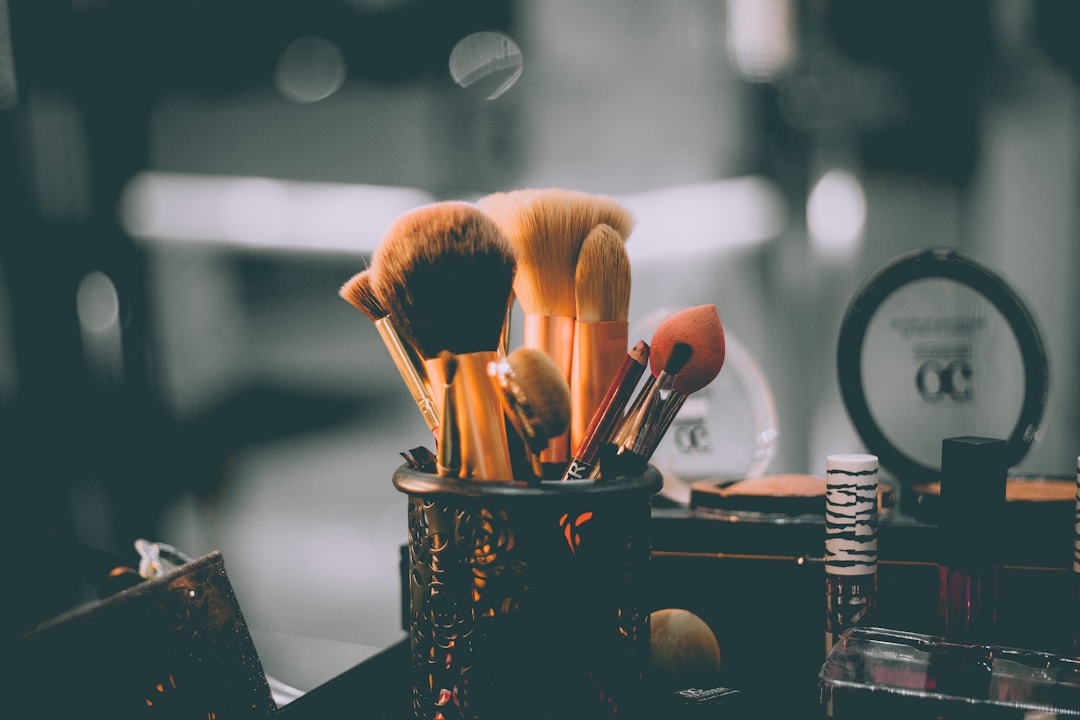Low Fade with Beard: Complete Styling Guide 2025
Master the art of combining a low fade haircut with beard styles. Professional techniques for seamless transitions, grooming routines, and maintenance tips from Queens NYC barber experts.

The combination of a low fade haircut with a beard represents one of the most sophisticated and masculine grooming aesthetics available today. This powerful pairing creates a cohesive, well-groomed appearance that balances the sharp precision of a fade with the rugged character of facial hair.
Whether you're cultivating a full beard, maintaining corporate stubble, or experimenting with designer facial hair styles, understanding how to coordinate your low fade with your beard is essential for achieving a polished, intentional look. This complete guide covers professional techniques, grooming strategies, and maintenance routines to help you master this classic combination.
Why Low Fade and Beard Combinations Work
The low fade and beard combination has become a signature look because it balances structure with style. The clean, tapered fade provides sharp definition around the head, while the beard adds dimension, maturity, and personal expression to your facial features.
1. Enhanced Masculine Frame
The low fade creates clean lines while the beard adds fullness, establishing a strong, defined facial structure.
2. Professional Versatility
Works in both corporate and casual settings when properly maintained, offering flexibility for different environments.
3. Face Shape Optimization
Strategic beard shaping combined with fade placement can improve or balance facial proportions effectively.
4. Seamless Transition Aesthetic
When executed correctly, the fade flows naturally into facial hair, creating visual continuity from head to beard.
5. Low Maintenance with High Impact
Once established, the combination requires consistent but straightforward grooming to maintain its sharp appearance.
Coordinating Beard Length with Low Fade Placement
The relationship between your low fade placement and beard length is important for achieving visual balance. The fade's starting point, gradient intensity, and endpoint should all be considered in relation to your beard's fullness and length.
Beard Length Guidelines by Fade Type
Optimal Beard Length: 1/8" - 1/2"
Style: Designer stubble, short corporate beard
Why It Works: The minimal fade height complements shorter beards, creating subtle sophistication without overwhelming facial features.
Best For: Professional environments, fine facial hair, maintaining clean aesthetic
Optimal Beard Length: 1/2" - 1.5"
Style: Medium corporate beard, full shaped beard
Why It Works: The standard low fade placement provides excellent balance for medium beard lengths, offering versatility for multiple beard styles.
Best For: Most face shapes, versatile styling, professional to casual transition
Optimal Beard Length: 1" - 3"
Style: Full beard, long shaped beard, statement beard
Why It Works: The higher fade starting point balances fuller beards, preventing the bottom-heavy appearance that can occur with lower fades and long beards.
Best For: Thick facial hair, creative environments, making strong style statements
The Visual Balance Rule
Professional Tip: Your beard length should generally match or exceed the hair length at the point where your low fade begins. This creates visual continuity and prevents the appearance of disconnection between haircut and beard. For example, if your fade starts at a #2 guard length (1/4 inch), your beard should be at least 1/4 inch for cohesive appearance.
Professional Techniques for Seamless Fade-to-Beard Transitions

The transition area where your low fade meets your beard - specifically the sideburn region - is the most critical zone for creating a cohesive, professional appearance. This section requires precision blending techniques that many barbers spend years perfecting.
The Sideburn Transition Zone
Professional Blending Process
- Establish the Fade Endpoint: The low fade should reach its final blended length (typically #1 or #2) before entering the sideburn area.
- Match Beard Entry Point: The beard length at the sideburn should match the fade's endpoint length for seamless flow.
- Taper the Sideburn: Use clippers to create a gradual taper from the fade length into the beard, avoiding harsh lines.
- Refine with Detailing: Use detail trimmers to perfect the transition line, ensuring smooth visual continuity.
- Assess from Multiple Angles: Check the transition from front, side, and three-quarter views to ensure consistent blending.
Beard Line Shaping Strategies
The beard cheek line and neckline must be precisely shaped to complement your low fade. These elements work together to frame your face and create definition.
Guideline: The beard cheek line should follow a natural arc that complements the fade's curvature.
High Cheek Line: Creates sharp definition, works well with tight low fades
Natural Cheek Line: Follows natural growth pattern, complements classic low fades
Shaped Cheek Line: Customized to face shape, ideal for extended low fades
Guideline: The neckline should be defined at approximately two fingers above the Adam's apple.
Rounded Neckline: Softens the jaw, works for all low fade types
Straight Neckline: Creates angular definition, pairs with tight fades
Natural Neckline: Minimal shaping, suited for longer beards and extended fades
Popular Beard Styles That Complement Low Fades
While low fades work with virtually any beard style, certain combinations create particularly striking results. Here are the most popular and effective beard styles to pair with your low fade haircut.
Full Beard with Low Fade
Length: 1-2 inches | Maintenance: Moderate | Best Fade: Classic to Extended Low Fade
The full beard paired with a low fade creates maximum masculine impact while maintaining groomed sophistication. The structured fade provides clean contrast to the beard's fullness.
Styling Key: Keep beard edges sharp (cheek line and neckline) to match the fade's precision. Regular professional shaping every 2-3 weeks maintains balance.
Corporate Beard with Low Fade
Length: 1/2-1 inch | Maintenance: High | Best Fade: Tight to Classic Low Fade
Ideal for professional environments, the corporate beard offers facial definition without appearing overly casual. This combination projects competence and attention to detail.
Styling Key: Maintain consistent beard length with weekly trimming. The low fade should be refreshed every 2 weeks to preserve the polished aesthetic.
Designer Stubble with Low Fade
Length: 1/8-1/4 inch | Maintenance: Moderate | Best Fade: Tight Low Fade
Designer stubble offers subtle masculinity and texture without full beard commitment. The low fade keeps the overall look clean and intentional rather than unkempt.
Styling Key: Maintain stubble at consistent length (typically 3-4mm) using beard trimmer guards. Define cheek and neck lines for structured appearance.
Tapered Beard with Low Fade
Length: Varied (shorter on sides, longer at chin) | Maintenance: High | Best Fade: Classic to Extended Low Fade
The tapered beard uses graduated length to improve face shape - longer at the chin, shorter on the sides. This mirrors the fade's gradient approach for cohesive styling.
Styling Key: Requires skilled barber shaping to create proper taper. The fade and beard taper should flow together as complementary elements.
Goatee with Low Fade
Length: Variable | Maintenance: High | Best Fade: Tight to Classic Low Fade
Goatee styles (chin beard with or without mustache) create focused facial emphasis. The clean low fade complements the goatee's precision and intentional styling.
Styling Key: Sharp goatee borders are essential - any imprecision will clash with the fade's clean lines. Consider connecting or disconnecting from mustache based on preference.
Essential Products and Daily Grooming Routine

Maintaining both a low fade haircut and beard requires a strategic product arsenal and consistent grooming routine. The right products keep your haircut fresh and your beard healthy, soft, and well-shaped.
1. Beard Oil (Daily Use)
Purpose: Moisturizes skin beneath beard, softens facial hair, adds healthy shine
Application: Apply 3-8 drops to damp beard after showering, distribute evenly from roots to tips
When: Morning routine, daily after shower
2. Beard Balm or Butter (Daily Styling)
Purpose: Provides hold for styling, additional moisture, tames flyaways
Application: Warm small amount between palms, work through beard for shaping and control
When: After beard oil application, before styling
3. Quality Clippers with Multiple Guards
Purpose: Home maintenance for beard length and fade touch-ups
Recommendation: Professional-grade clippers (Wahl, Andis, Oster) with guards from #0.5 to #4
4. Detail Trimmer / Edger
Purpose: Precise line work for cheek line, neckline, and sideburn definition
Usage: Every 2-3 days for maintaining sharp edges between professional appointments
5. Beard Shampoo (2-3 Times Weekly)
Purpose: Removes buildup, oils, and debris while maintaining facial hair health
Note: Beard-specific formulas are gentler than regular shampoo, preventing dryness
6. Light Pomade or Styling Cream (Fade Area)
Purpose: Adds texture and control to hair on top, complements beard styling
Application: Small amount to damp or dry hair for natural hold and subtle shine
7. Boar Bristle Brush
Purpose: Distributes natural oils, trains beard direction, removes dead skin
Usage: Daily brushing after product application, helps maintain shape
8. Beard Comb (Wide and Fine Tooth)
Purpose: Detangles, styles, and distributes products evenly
Recommendation: Wood or horn combs prevent static and hair breakage
Daily Grooming Routine
Morning Routine (5-8 minutes)
- Wash beard with lukewarm water (full shampoo 2-3x per week, water rinse other days)
- Pat dry with towel - leave slightly damp for product application
- Apply beard oil - 3-8 drops depending on beard length, massage into skin and hair
- Apply beard balm - for styling hold and additional moisture
- Comb or brush beard into desired shape, training direction of growth
- Style hair on top with light pomade or cream to complement beard aesthetic
- Check edges - use detail trimmer to clean up any stray hairs on cheek or neck lines
Evening Routine (2-3 minutes)
- Rinse beard with water to remove daily buildup
- Apply light beard oil (optional, for very dry climates or winter)
- Brush beard to distribute natural oils and maintain training
Weekly Maintenance (15-20 minutes)
- Trim beard length with clippers and guards to maintain consistent shape
- Define cheek and neck lines with detail trimmer for sharp borders
- Assess fade crispness - determine if professional touch-up needed (typically every 2-3 weeks)
- Deep condition with beard mask or conditioning treatment (optional monthly)
Maintenance Schedule for Low Fade and Beard
Consistent maintenance is the difference between a polished, intentional appearance and a neglected one. Both your low fade and beard require regular attention on different schedules.
| Frequency | Task | Location | Duration |
|---|---|---|---|
| Daily | Beard wash, oil application, styling | Home | 5-8 min |
| Every 2-3 Days | Edge cleanup (cheek/neck lines) | Home | 3-5 min |
| Weekly | Beard length trimming, shaping | Home | 10-15 min |
| Every 2 Weeks | Low fade refresh, professional beard shaping | Barber | 30-45 min |
| Every 3 Weeks | Full haircut and detailed beard grooming | Barber | 45-60 min |
| Monthly | Deep conditioning treatment (optional) | Home | 15-20 min |
Professional Recommendation: Schedule combined appointments for haircut and beard grooming every 2-3 weeks. This ensures your barber can coordinate both elements for optimal balance and transition. Home maintenance between appointments keeps edges clean and extends the professional grooming impact.
Common Mistakes to Avoid
Even experienced groomers make errors when combining low fades with beards. Avoid these common pitfalls to maintain a polished, cohesive appearance.
❌ Mismatched Transition Lengths
The Problem: Fade ending at #1 but beard starting at #3 creates visible gap and disconnection.
Solution: Ensure fade endpoint matches beard entry point in sideburn area for seamless flow.
❌ Neglecting Beard Lines
The Problem: Crisp low fade with undefined, natural beard borders creates inconsistent grooming standards.
Solution: Define cheek and neck lines to match the precision of your fade. Sharp edges throughout maintain cohesive aesthetic.
❌ Over-Trimming the Sideburn Area
The Problem: Removing too much hair where fade meets beard creates unnatural gaps and harsh transitions.
Solution: Let professional barber manage sideburn transitions. This delicate area requires expert blending technique.
❌ Inconsistent Maintenance Schedules
The Problem: Fades grow out faster than beards, creating imbalanced appearance when maintenance is irregular.
Solution: Establish consistent 2-3 week professional maintenance schedule. Home touch-ups keep look fresh between visits.
❌ Using Regular Shampoo on Beard
The Problem: Regular hair shampoo strips natural oils from facial hair, causing dryness, brittleness, and irritation.
Solution: Use beard-specific shampoo 2-3 times weekly. Daily conditioning with beard oil maintains moisture and softness.
❌ Ignoring Face Shape Considerations
The Problem: Choosing beard length and fade placement without considering face shape proportions can emphasize unflattering features.
Solution: Consult with experienced barber to determine optimal fade placement and beard length for your specific facial structure.
Related Low Fade Resources
Frequently Asked Questions
Get Your Perfect Low Fade and Beard Combination
Visit DIDA Hair Studio in Queens, NYC for expert low fade haircuts and professional beard grooming. Our experienced barbers specialize in creating seamless transitions and coordinated styling for a polished, masculine appearance.
Final Thoughts on Low Fade and Beard Coordination
The combination of a low fade haircut with a well-maintained beard represents a timeless approach to masculine grooming. When executed with attention to detail - coordinating fade placement with beard length, maintaining clean transitions, and establishing consistent grooming routines - this pairing creates a powerful, sophisticated aesthetic suitable for any environment.
Whether you choose a full beard for maximum impact, a corporate beard for professional settings, or designer stubble for subtle definition, the key is ensuring both elements work together as complementary parts of a cohesive whole. Regular professional maintenance combined with daily home care keeps your low fade crisp and your beard healthy, soft, and well-shaped.
Invest in quality products, establish a consistent grooming routine, and work with an experienced barber who understands how to coordinate both your haircut and beard. The result is a polished, intentional appearance that demonstrates attention to detail and personal pride - a combination that never goes out of style.